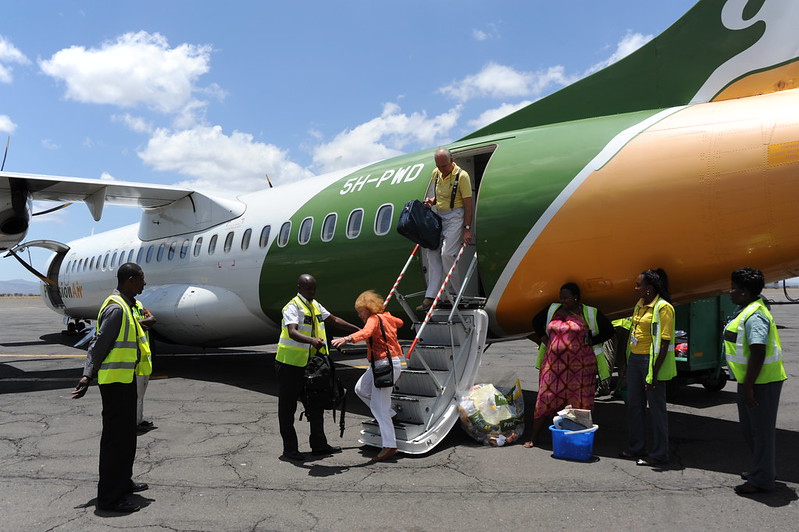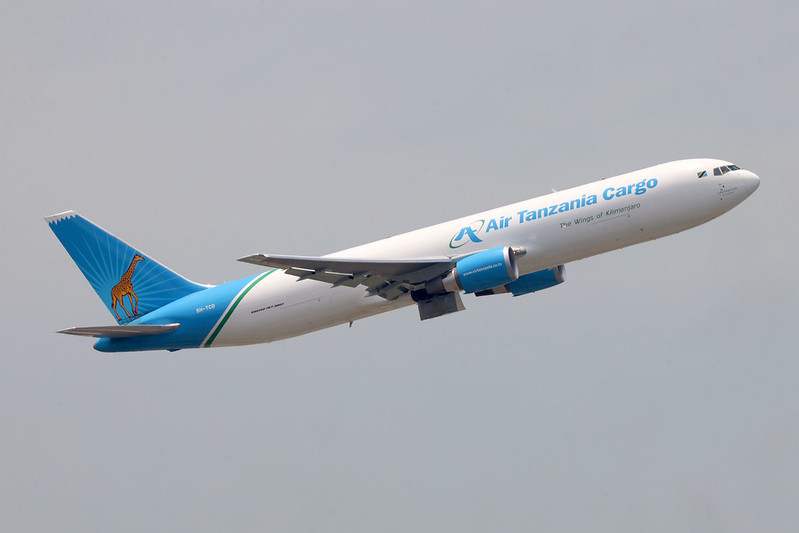Kilimanjaro International Airport
Kilimanjaro International Airport is an internationally recognized airport designated by the code ‘JRO’. It encompasses an area of 110 square kilometers (about 894 square miles) situated in the northern portion of Tanzania, bordered by the Arusha and Kilimanjaro (Moshi) areas. Kilimanjaro International Airport connects Tanzania, particularly its northern region, to the global network. Kilimanjaro International Airport is advantageously situated equidistant from Arusha and Kilimanjaro. The two regions merit attention in discussions of the tourist sector in Tanzania and East Africa due to their distinctive features that render them economically viable. This renders it the optimal location for visiting the majority of possible sites in Tanzania, owing to its strategic positioning. The technical location indicator for Kilimanjaro International Airport is HTKJ.
It was established in late 1971 during the commemoration of the tenth anniversary of Tanzania’s independence, coinciding with the inaugural opening of Kilimanjaro International Airport. Its amalgamation of Tanzania’s natural beauty with the external world has led to its designation as “the gateway to Africa’s wildlife.” Although this airport commenced operations early, it was not fully sold to the government of Tanzania until early 1998. The Kilimanjaro Airport Development Company (KADCO), which is legally owned by the government of Tanzania, owned and operated it at that time.
The primary objective of the airport was to attract substantial numbers of international visitors to East Africa, particularly those traveling to Tanzania to admire the stunning landscapes of its national parks and to ascend the highest elevations in Africa, located exclusively on the summits of Mount Kilimanjaro.

The Kilimanjaro region is renowned for housing Africa’s tallest peak, Mt. Kilimanjaro, while Arusha is recognized for its abundant tourist attractions, including Arusha National Park, Tarangire National Park, and the Ngorongoro Conservation Area, which has the prominent Ngorongoro Crater. The airport is located in an area that is readily accessible from both areas along a well-maintained tarmac road, allowing individuals to reach the airport from the nearest city centers in approximately thirty minutes.
The selection of the location for Kilimanjaro International Airport was significantly influenced by the presence of tanzanite minerals, the most expensive gemstones in Tanzania and East Africa. The Mererani mines, situated within minutes from Kilimanjaro International Airport, are the source of their extraction. This element significantly facilitates the transportation of these rich minerals for subsequent refining and processing, hence engendering substantial economic growth for our nation through revenue generated from the gemstone trade.

Kilimanjaro International Airport is situated 40 kilometers southeast of Arusha and 30 km southwest, at coordinates 3°25’S, 37°42’E, with a height of 2,932 ft above sea level. This geographical area promotes climatic conditions with an average temperature of 31-34 °C. This situation is typically linked to prevailing winds, predominantly documented as originating from the west and moving towards the east. This necessitates a specialized design element for the airport runway that facilitates the landing of all aircraft, even under adverse weather circumstances. A significant number of aggregates contributed to the design of the Cat II ILS landing system, which ultimately demonstrates the greatest efficacy under such weather conditions. In 2005, significant improvements were implemented on the runway at Kilimanjaro International Airport to accommodate recent technical breakthroughs globally. The tarmac road measures 3600 meters in length (11835 feet) and 45 meters in width, orientated east-west.
Kilimanjaro International Airport connects Tanzania to other destinations across Africa, including South Africa, Ethiopia, and Nigeria, and offers direct flights to international locations such as the Middle East and Europe, among others. It also offers internal flights that operate daily routes to various places inside Tanzania, including Dar es Salaam, Dodoma, and Mwanza. This also enables moves inside Tanzania to occur in a timely manner. This primarily benefits tourists seeking to experience several parts of Tanzania efficiently, while also serving as a significant advantage for time-sensitive individuals, such as business professionals. This is achievable solely via the assistance of international airlines operating at the airport, including Ethiopian Airways, Rwandair, Turkish Airways, Fly Dubai, Qatar Airways, Edelweiss Air, and Air Tanzania, which serve as the formidable aerial representatives of Tanzania. All these factors significantly contribute to the growth of Kilimanjaro foreign Airport regarding foreign flights, airline operations, and, notably, airline traffic, which is a crucial indicator of success in navigating the expansive skies. Kilimanjaro International Airport provides world-class services at a highly inexpensive price accessible to all socioeconomic strata.
The initial terminals of the airport were designed to accommodate approximately 200,000 people annually; however, subsequent extensions have increased this capacity to nearly one million passengers per year, roughly five times the original terminal capacity. The expansions are crucial when acknowledging KADCO’s efforts to elevate the airport to an international-class entry point for experiencing Tanzania’s stunning landscapes. The contest did not conclude there; it instead transitioned into a prolonged effort for the efficient collection of income over several years, aimed at renovating the airport’s infrastructure to enhance its development. The resurfacing of the 3600m x 45m runway, which accommodates Boeing 747-400 series and Antonov 124 aircraft, the design of fully automated weather stations and security systems, and the enhancement of fire rescue systems were significant initiatives undertaken to align Kilimanjaro Airport with International Civil Aviation Organization (ICAO) standards.
Reaching a pinnacle is a desire held by every firm, although they often discover that aspirations do not materialize as anticipated. Kilimanjaro Airport Development Company (KADCO) has achieved tranquility regarding its circumstances via significant efforts, enabling Kilimanjaro International Airport to proudly represent Tanzania amidst the challenges faced by less suitable alternatives. KIA has garnered multiple achievement accolades, notably being the overall winner of the Routes Africa Airport Marketing Award for consecutive years, 2013 and 2014. These awards are the most significant in the realm of aviation in Africa. Kilimanjaro International Airport secured the title of overall winner at the Middle East and African Marketing Awards in 2015 for the consecutive year, without permitting us to consider other aviation enterprises. The situation arose from the conflict initiated by the Kilimanjaro Airport Development Company (KADCO), which was compelled to engage in a struggle for survival to surpass rival airports, hence maintaining its esteemed status. I therefore announce to all those considering a visit to Tanzania that Kilimanjaro International Airport offers unparalleled services that exceed expectations throughout Africa.
